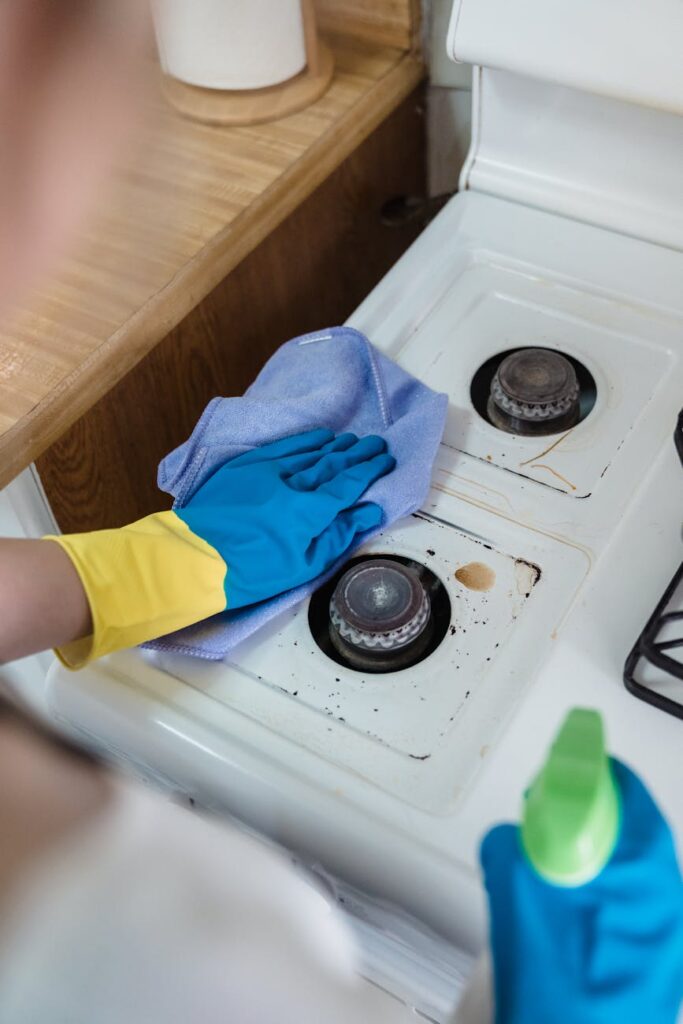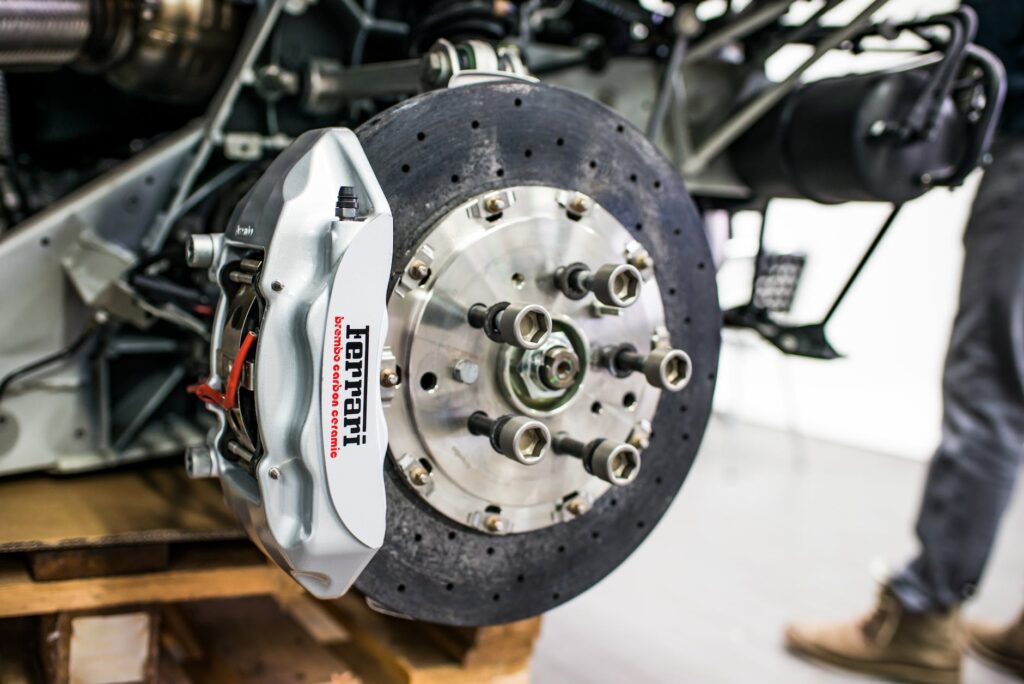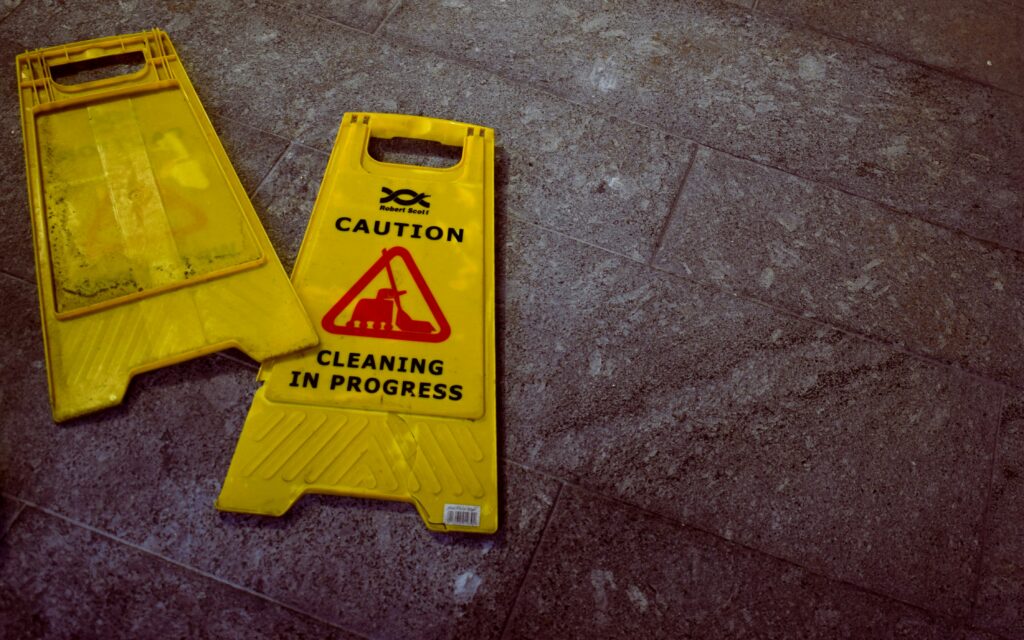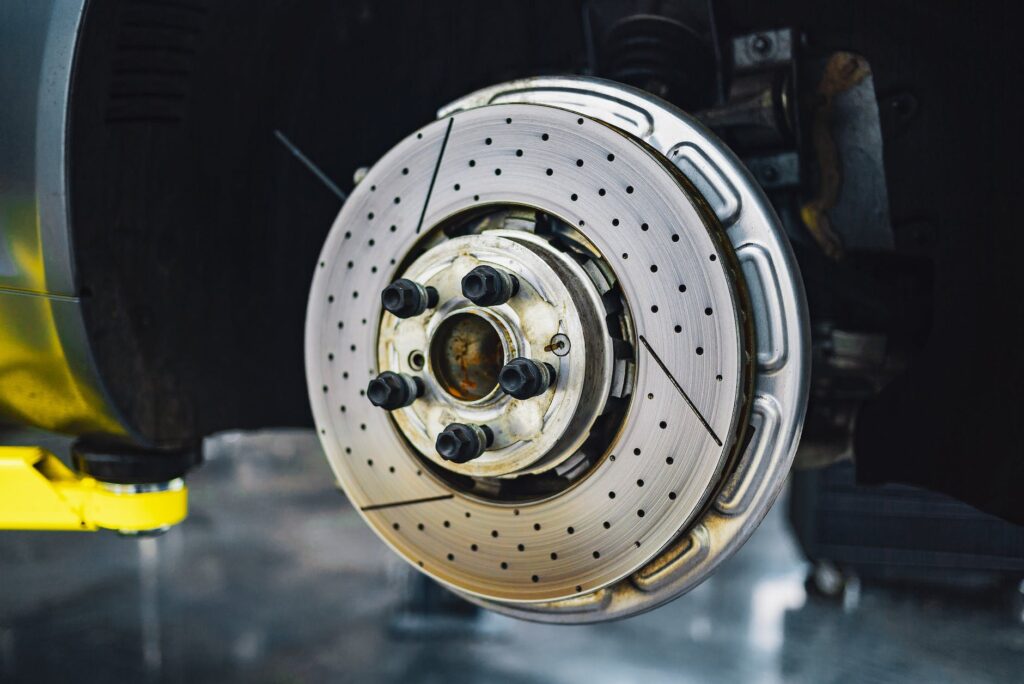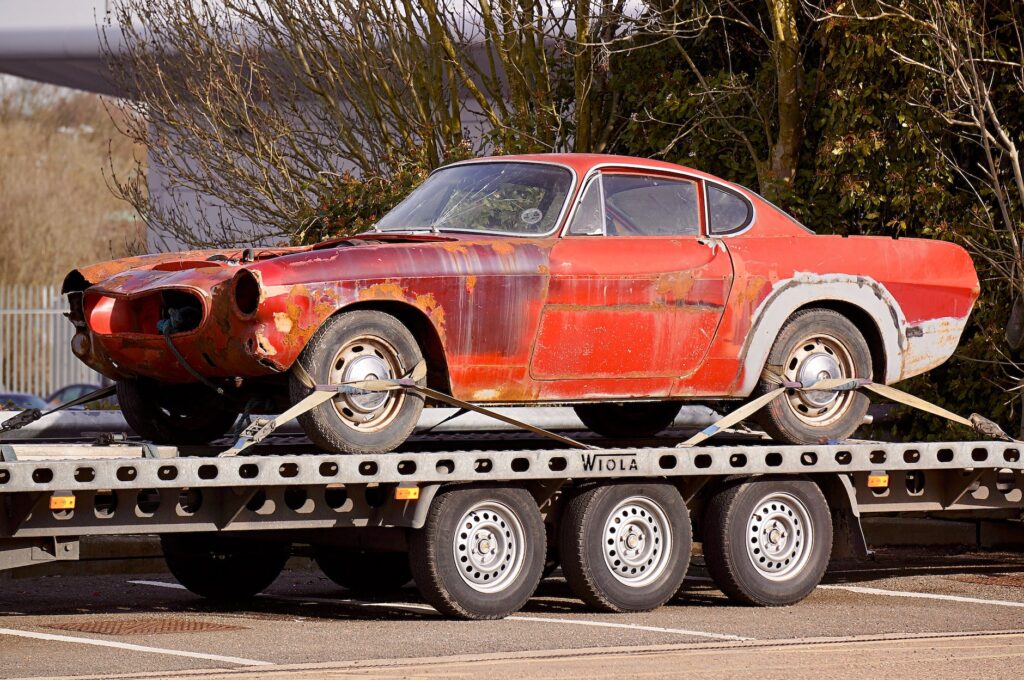Contents
Understanding Brake Cleaner
Brake cleaner is an essential product used in automotive maintenance to clean and degrease brake components. It helps remove dirt, grime, brake dust, and other contaminants that can accumulate on brake parts over time. Understanding the purpose and importance of brake cleaner is crucial for maintaining the performance and safety of your vehicle.
What is Brake Cleaner?
Brake cleaner is a solvent-based product specifically designed to clean and degrease brake components. It comes in a convenient spray can and is formulated to effectively dissolve and remove brake dust, oil, grease, and other contaminants that can impair brake performance. Brake cleaner is typically used on brake calipers, rotors, drums, pads, and other brake hardware.
The composition of brake cleaner can vary, but it generally contains powerful solvents such as acetone, methyl ethyl ketone (MEK), toluene, or trichloroethylene. These solvents have excellent degreasing properties and can quickly dissolve and remove stubborn brake residue.
Importance of Brake Cleaner
Brake cleaner plays a crucial role in maintaining the performance and safety of your vehicle’s braking system. Here are a few key reasons why brake cleaner is important:
Improved Brake Performance: Over time, brake components can accumulate dirt, dust, and grease, which can negatively impact brake performance. By using brake cleaner to effectively remove these contaminants, you can restore proper brake function and ensure optimal stopping power.
Prevention of Brake Noise: Brake noise, such as squeaking or squealing, can be caused by the buildup of brake dust or debris. Regularly cleaning your brake components with brake cleaner can help mitigate these noises and ensure a quieter braking experience.
Extended Brake Life: By keeping your brake components clean and free from contaminants, you can help extend the lifespan of your brakes. Brake cleaner helps remove corrosive substances that can contribute to premature wear and deterioration of brake parts.
Safety: Clean brakes are essential for safe driving. Brake cleaner helps remove oil, grease, and other substances that can reduce friction between the brake pads and rotors, ensuring optimal braking performance and reducing the risk of accidents.
When using brake cleaner, it’s important to follow the manufacturer’s instructions and take proper safety precautions. Make sure to wear protective gloves and eyewear, work in a well-ventilated area, and avoid spraying the cleaner on rubber parts or painted surfaces, as it may cause damage. If you’re unsure about using brake cleaner or need assistance, consult a professional mechanic.
Understanding the purpose and importance of brake cleaner is essential for maintaining the performance, safety, and longevity of your vehicle’s braking system. In the following sections, we will explore the differences between chlorinated and non-chlorinated brake cleaner, the environmental and health considerations, and factors to consider when choosing the right brake cleaner for your needs.
Chlorinated vs. Non-Chlorinated Brake Cleaner
When it comes to choosing a brake cleaner, one of the primary decisions to make is whether to opt for a chlorinated or non-chlorinated formulation. Understanding the differences and weighing the pros and cons of each can help you make an informed decision.
Differences Between Chlorinated and Non-Chlorinated Brake Cleaner
The main distinction between chlorinated and non-chlorinated brake cleaner lies in the composition and properties of the solvents used. Chlorinated brake cleaner typically contains powerful solvents such as perchloroethylene or trichloroethylene, which are highly effective at removing brake dust, grease, and other contaminants from brake components. Non-chlorinated brake cleaner, on the other hand, relies on alternative solvents that do not contain chlorine compounds. These solvents are typically less aggressive but still effective in cleaning brake parts.
Pros and Cons of Chlorinated Brake Cleaner
Chlorinated brake cleaner offers several advantages in terms of its cleaning power. The aggressive solvents in chlorinated brake cleaner can effectively dissolve and remove stubborn deposits, providing a thorough clean for brake components. However, there are drawbacks to consider. Chlorinated brake cleaner tends to evaporate more slowly, which can extend the cleaning time and potentially leave residue behind. Additionally, chlorinated brake cleaner has the potential to dull paint and damage rubber components. Moreover, chlorinated brake cleaners often contain toxic and hazardous chemicals, such as MEK, Acetone, Gun Wash, and carcinogens like Benzene and its derivatives, which pose risks to both health and the environment.
Pros and Cons of Non-Chlorinated Brake Cleaner
Non-chlorinated brake cleaner offers an alternative that addresses some of the concerns associated with chlorinated brake cleaner. These formulations often evaporate faster than their chlorinated counterparts, which can expedite the cleaning process. Non-chlorinated brake cleaners are also generally considered more eco-friendly, as they do not contain the same toxic and hazardous chemicals found in chlorinated brake cleaners. Moreover, non-chlorinated brake cleaner does not typically dull paint or damage rubber components.
However, it’s important to note that non-chlorinated brake cleaners may not be as aggressive in removing stubborn contaminants and may require additional effort or repeat applications to achieve a thorough clean.
When selecting the right brake cleaner for your needs, carefully consider the specific requirements of your brake system and the level of cleaning power you require. Additionally, take into account the potential environmental and health impact of the chosen brake cleaner. It’s always a good practice to follow safety precautions when using any brake cleaner, irrespective of its formulation. If you’re looking for alternative brake cleaner options, our article on 5 top brake cleaner alternatives can provide additional insights.
Remember, maintaining clean and well-functioning brakes is essential for safety and optimal performance. Choose a brake cleaner that aligns with your priorities in terms of effectiveness, environmental impact, and safety considerations.
Environmental and Health Considerations
When it comes to choosing between chlorinated and non-chlorinated brake cleaner, it’s important to consider the environmental and health impacts of each option.
Environmental Impact of Chlorinated Brake Cleaner
Chlorinated brake cleaners are not environmentally friendly and often contain toxic and dangerous chemicals such as MEK, Acetone, and Gun Wash, as well as carcinogens like Benzene and its derivatives (Envirofluid). These chemicals can have a detrimental effect on ecosystems if they enter waterways or soil through improper disposal.
Additionally, chlorinated brake cleaners typically have higher VOC (volatile organic compounds) content. VOCs contribute to air pollution and can have adverse effects on air quality. Due to their environmental impact, the use and disposal of chlorinated brake cleaners may be regulated in different regions (Berryman Products).
Health Hazards of Chlorinated Brake Cleaner
Chlorinated brake cleaners often contain toxic and dangerous chemicals such as MEK, Acetone, and Gun Wash, which are harmful to health (Envirofluid). These chemicals can pose health risks if inhaled, ingested, or if there is skin contact.
Some of the chemicals found in chlorinated brake cleaners, like perchloroethylene or trichloroethylene, are highly toxic and hazardous to health. Prolonged or repeated exposure to these substances can have adverse effects on the nervous system, liver, and kidneys.
Safer Alternatives: Non-Chlorinated Brake Cleaner
In contrast to chlorinated brake cleaners, non-chlorinated brake cleaners offer safer alternatives that eliminate the risks associated with toxicity and health hazards (Envirofluid). These non-chlorinated options often use different formulations that do not contain the harmful chemicals found in their chlorinated counterparts.
Non-chlorinated brake cleaners, such as those in the Triple7 range, provide powerful yet safe alternatives to the toxic substances found in chlorinated brake cleaners. They are often formulated with safer solvents that effectively clean brake components without compromising safety or performance.
By opting for non-chlorinated brake cleaners, you can help reduce the negative impact on the environment and protect your health while still maintaining the cleanliness and functionality of your vehicle’s brakes.
When choosing a brake cleaner, it’s crucial to prioritize safety and consider the potential impact on both the environment and your well-being. Exploring alternatives to chlorinated brake cleaners, such as non-chlorinated options, can provide a safer and more responsible solution for your brake cleaning needs.
Choosing the Right Brake Cleaner
When it comes to selecting the right brake cleaner, there are several factors to consider to ensure optimal performance and safety. Understanding these factors will help you make an informed decision and choose the most suitable brake cleaner for your needs.
Factors to Consider When Choosing Brake Cleaner
Cleaning Power: Different brake cleaners have varying degrees of cleaning power. Chlorinated brake cleaners are generally more effective at cleaning than non-chlorinated versions, as they contain more powerful chemicals. However, it’s important to note that the chemicals in brake cleaner, whether chlorinated or non-chlorinated, can be very dangerous if they come into contact with the eyes or mouth. Therefore, it is crucial to handle them with care (Apelusa).
Compatibility: Consider the compatibility of the brake cleaner with the materials in your braking system. Some brake cleaners may damage rubber or certain types of paint, so it’s important to choose a cleaner that is safe for use on the specific components of your braking system. If you have any concerns about compatibility, consult a professional or refer to the manufacturer’s recommendations.
Application: Determine the type of application that suits your needs. Brake cleaners are available in aerosol cans, sprays, or wipes. Aerosol cans provide a wide and controlled spray pattern, while sprays offer a targeted application. Wipes are convenient for smaller areas or quick touch-ups. Choose the application method that is most convenient for you and ensures thorough cleaning of your brake components.
Application-Specific Recommendations
Different brake cleaner formulations may be recommended for specific applications. For example, if you are working on a car, you may require a brake cleaner that is safe for use on automotive braking systems. On the other hand, if you are working on a bicycle, you may need a brake cleaner specifically formulated for bicycle brakes. Always follow the manufacturer’s instructions and refer to the specific recommendations for your application to ensure optimal results.
Safety Precautions for Using Brake Cleaner
Brake cleaners contain powerful chemicals that can be harmful to your health if not used properly. It is essential to take the necessary safety precautions when working with brake cleaner. Here are some guidelines to follow:
Protective Equipment: Wear gloves, safety glasses, and a mask to protect your skin, eyes, and respiratory system from contact with the chemicals. This is especially important when working in enclosed spaces or areas with poor ventilation.
Avoid Contact: Avoid direct contact with the skin, eyes, and mouth. If contact occurs, follow appropriate first aid measures, such as rinsing eyes with water for at least 15 minutes, washing skin with soap and water, and seeking medical help if needed (Apelusa).
Ventilation: Work in a well-ventilated area or use a fume extractor to minimize inhalation of vapors. The vapors from brake cleaner can be harmful to the respiratory system and nervous system, so it is important to ensure adequate ventilation.
Disposal: Dispose of used brake cleaner and any contaminated materials properly according to local regulations. Avoid pouring brake cleaner down drains or into the environment, as it can have negative environmental impacts.
By considering these factors, following application-specific recommendations, and taking appropriate safety precautions, you can choose the right brake cleaner for your needs and ensure safe and effective cleaning of your braking system. Remember, if you have any doubts or concerns, consult a professional or seek advice from the manufacturer.

